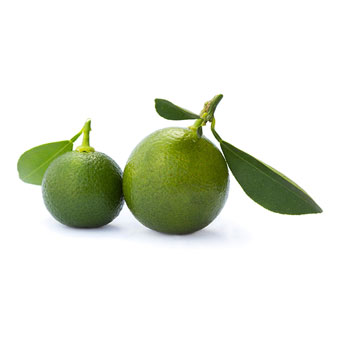Chung D, Cho TJ, Rhee MS Food Research International, 2018 ABSTRACT: Despite the widespread belief that citrus fruit extracts (CFEs) are microbiologically safe due to their acidity, limited bactericidal effect results in low applicability as antibacterial agent and outbreaks occurred by acid-adapted pathogens. Here, we examined the antibacterial effects of CFEs [lime (Citrus medica), lemon… Read more »

- Botanical Name: Citrus aurantifolia
- Alternative Names: Key Lime
- Botanical Family: Rutaceae
- Primary Constituent: Limonene
- Other Main Constituents: Gamma terpinene, Beta-pinene
- Distillation Method: Cold Pressed
- Plant Part: Peel
Citrus essential oils inhalation by mice: Behavioral testing, GCMS plasma analysis, corticosterone, and melatonin levels evaluation.
Wolffenbüttel AN, Zamboni A, Becker G, Dos Santos MK, Borille BT, de Cássia Mariotti K, Fagundes AC, de Oliveira Salomón JL, Coelho VR, Ruiz LV, de Moura Linck V, Dallegrave E, Cano P, Esquifino AI, Leal MB, Limberger RP Phytotherapy Research, 2017 ABSTRACT: The use of orange essential oils (EOs) as a complementary treatment is very common… Read more »
In Vitro Evaluation of Essential Oils Derived from Piper nigrum (Piperaceae) and Citrus limonum (Rutaceae) against the Tick Rhipicephalus (Boophilus) microplus (Acari: Ixodidae)
Vinturelle R, Mattos C, Meloni J, Nogueira J, Nunes MJ, Vaz IS Jr, Rocha L, Lione V, Castro HC, Chagas EFD Biochemistry Research International, 2017 ABSTRACT: The present research aimed to study the chemical composition and acaricidal activity of Citrus limonum and Piper nigrum essential oils against the cattle tick Rhipicephalus microplus. GC-MS analysis of C. limonumessential oil showed limonene (50.3%), β-pinene (14.4%), and γ-terpinene… Read more »
Synergistic interaction of ten essential oils against Haemonchus contortus in vitro
Katiki LM, Barbieri AME, Araujo RC, Veríssimo CJ, Louvandini H, Ferreira JFS Veterinary Parasitology, 2017 ABSTRACT: Anthelmintic resistance in sheep gastrointestinal nematodes is a worldwide problem. Multi-drug resistant haemonchosis is the most serious impediment for small ruminant systems, and there are no new drug candidates currently under development. Molecules from natural sources have demonstrated anthelmintic… Read more »
Use of prebiotic carbohydrate as wall material on lime essential oil microparticles
Campelo PH, Figueiredo JA, Zacarias Domingues R, Fernandes RVB, Botrel DA, Borges SV Journal of Microencapsulation, 2017 ABSTRACT: The aim of this work was to study the use of different prebiotic biopolymers in lime essential oil microencapsulation. Whey protein isolate, inulin and oligofructose biopolymers were used. The addition of prebiotic biopolymers reduced emulsion viscosity, althoughit produced larger… Read more »
Aromatherapy and Essential Oils (PDQ®): Health Professional Version
PDQ Integrative, Alternative, and Complementary Therapies Editorial Board PDQ Cancer Information Summaries, 2017 EXCERPT: This PDQ cancer information summary for health professionals provides comprehensive, peer-reviewed, evidence-based information about the use of aromatherapy and essential oils in the treatment of people with cancer. It is intended as a resource to inform and assist clinicians who care for cancer… Read more »
Preventive and ameliorating effects of citrus D-limonene on dyslipidemia and hyperglycemia in mice with high-fat diet-induced obesity.
Jing L, Zhang Y, Fan S, Gu M, Guan Y, Lu X, Huang C, Zhou Z
European Journal of Pharmacology, 2013
Eradication of C. albicans and T. rubrum with photoactivated indocyanine green, Citrus aurantifolia essential oil and fluconazole
Fekrazad R, Poorsattar Bejeh Mir A, Ghasemi Barghi V, Shams-Ghahfarokhi M
Photodiagnosis and Photodynamic Therapy, 2015
Linalool and beta-pinene exert their antidepressant-like activity through the monoaminergic pathway
Guzmán-Gutiérrez SL, Bonilla-Jaime H, Gómez-Cansino R, Reyes-Chilpa R. Life Sciences, 2015 ABSTRACT: AIMS: Linalool and β-pinene are two volatile monoterpenes that possess antidepressant-like activity. These are components of many aromatic plants used in folk medicine around the world to relieve anxiety and depression. In this contribution, we focused on examining the mechanism of action of… Read more »
Dissolution of gallstones.
Plaisier PW, Vergunst H, Terpstra OT
Digestive Diseases, 1993
